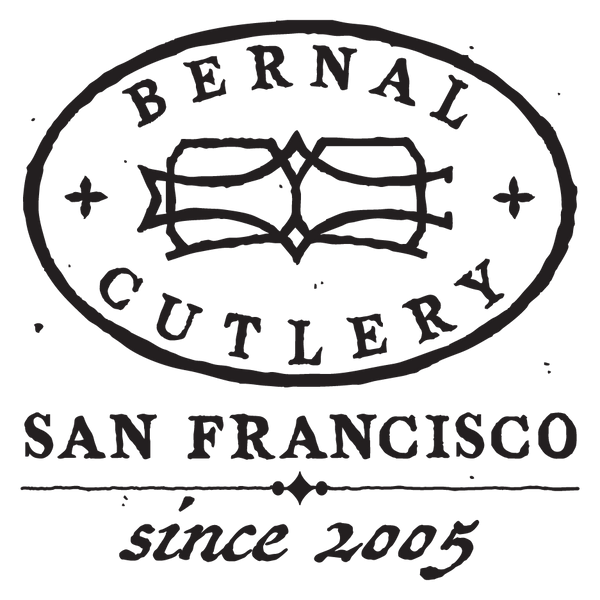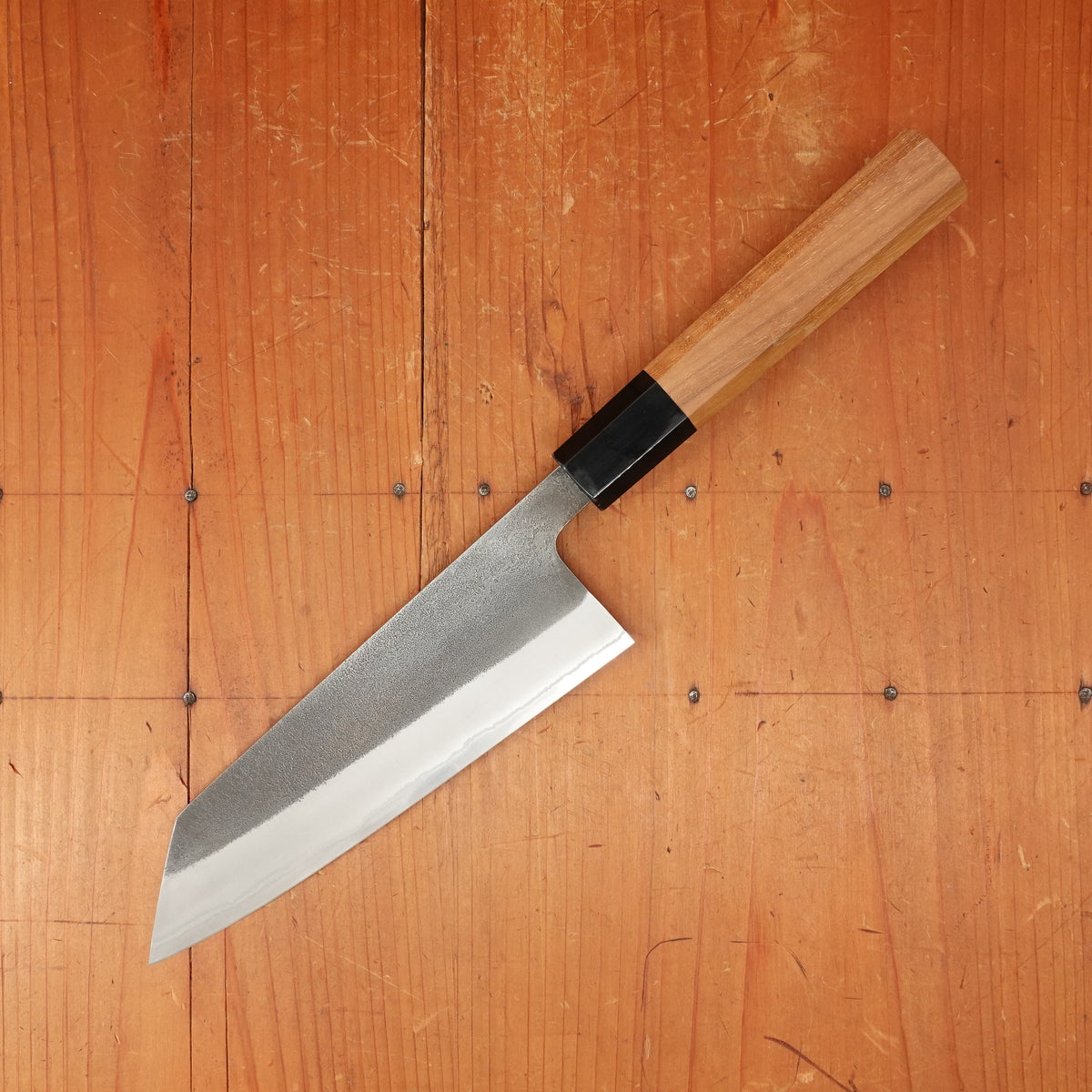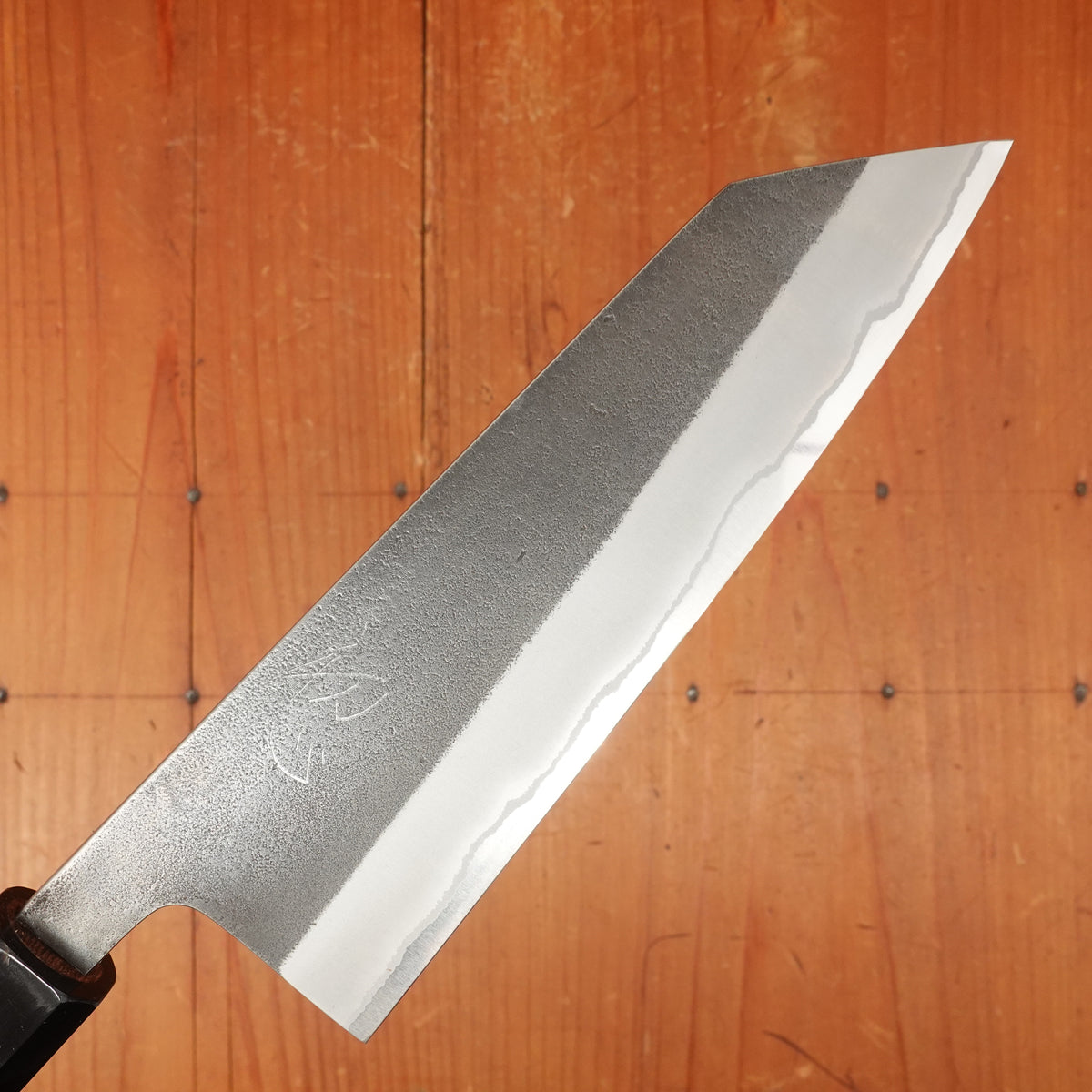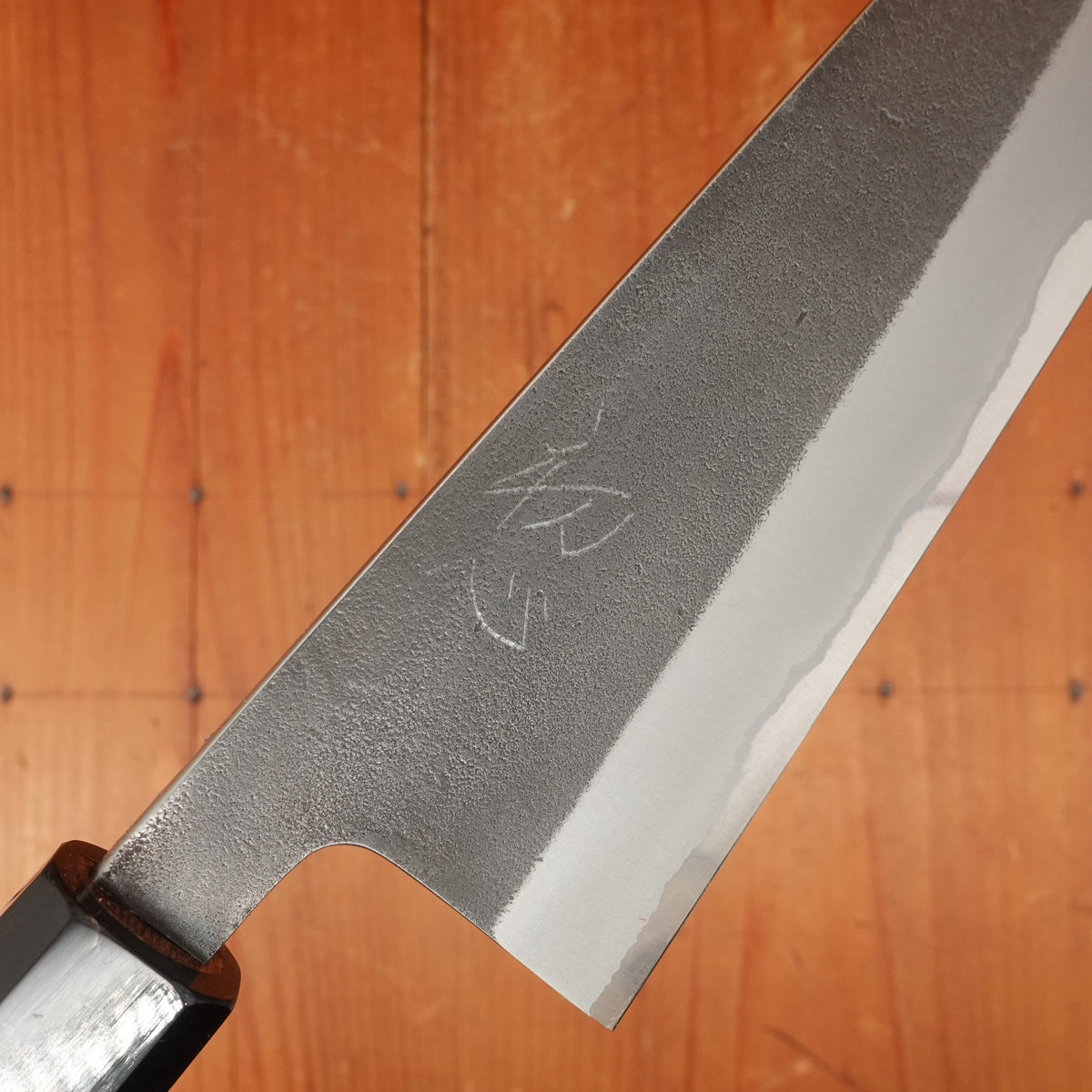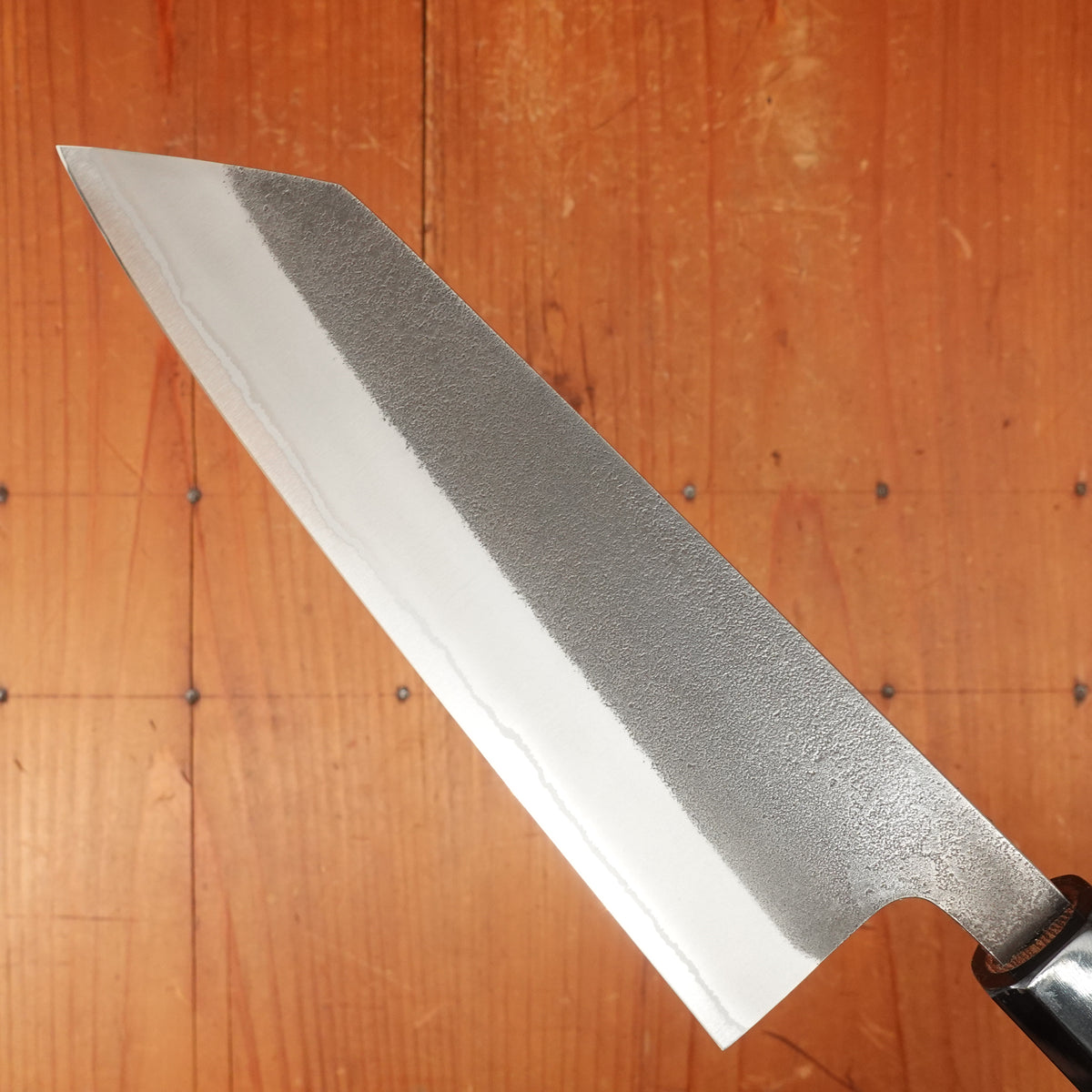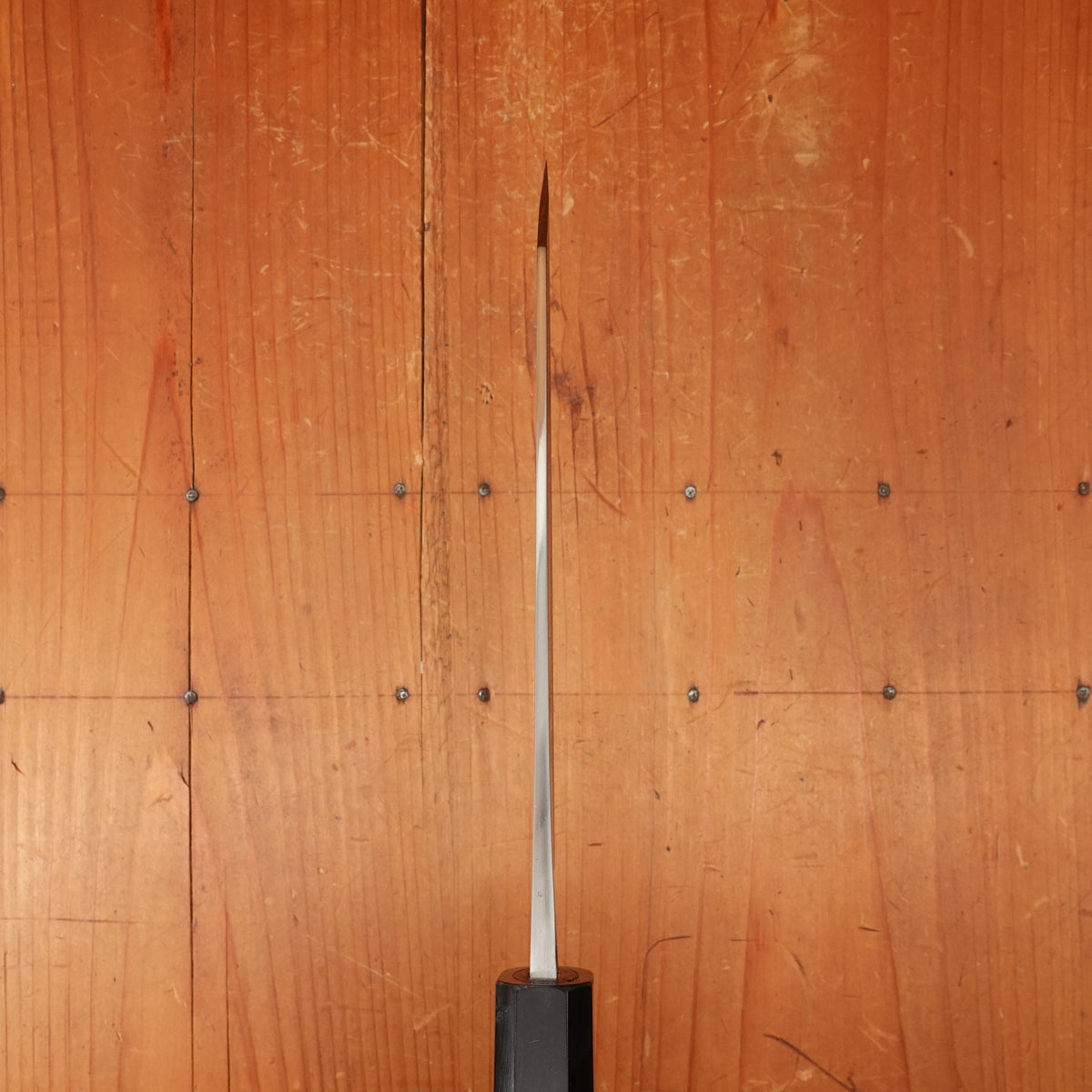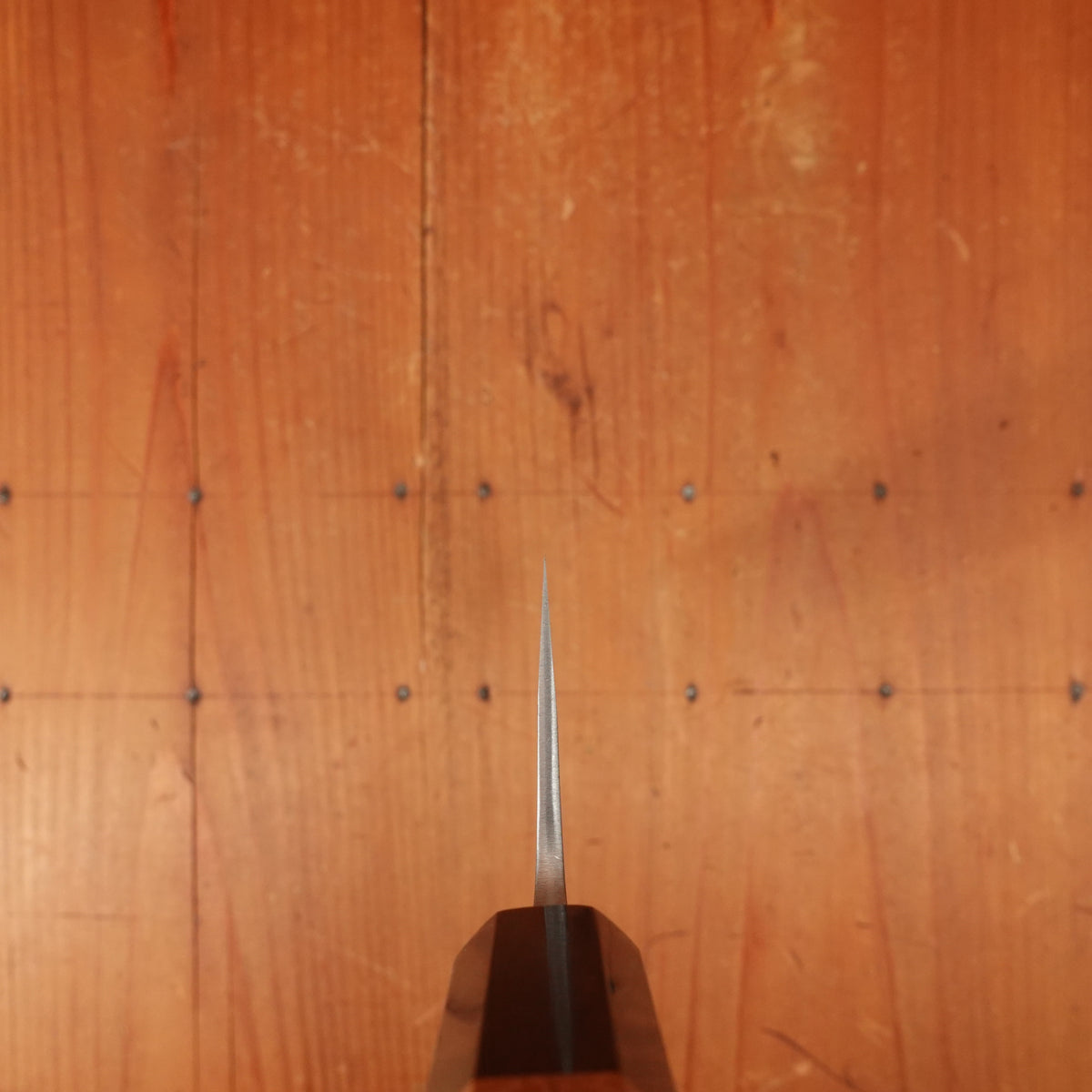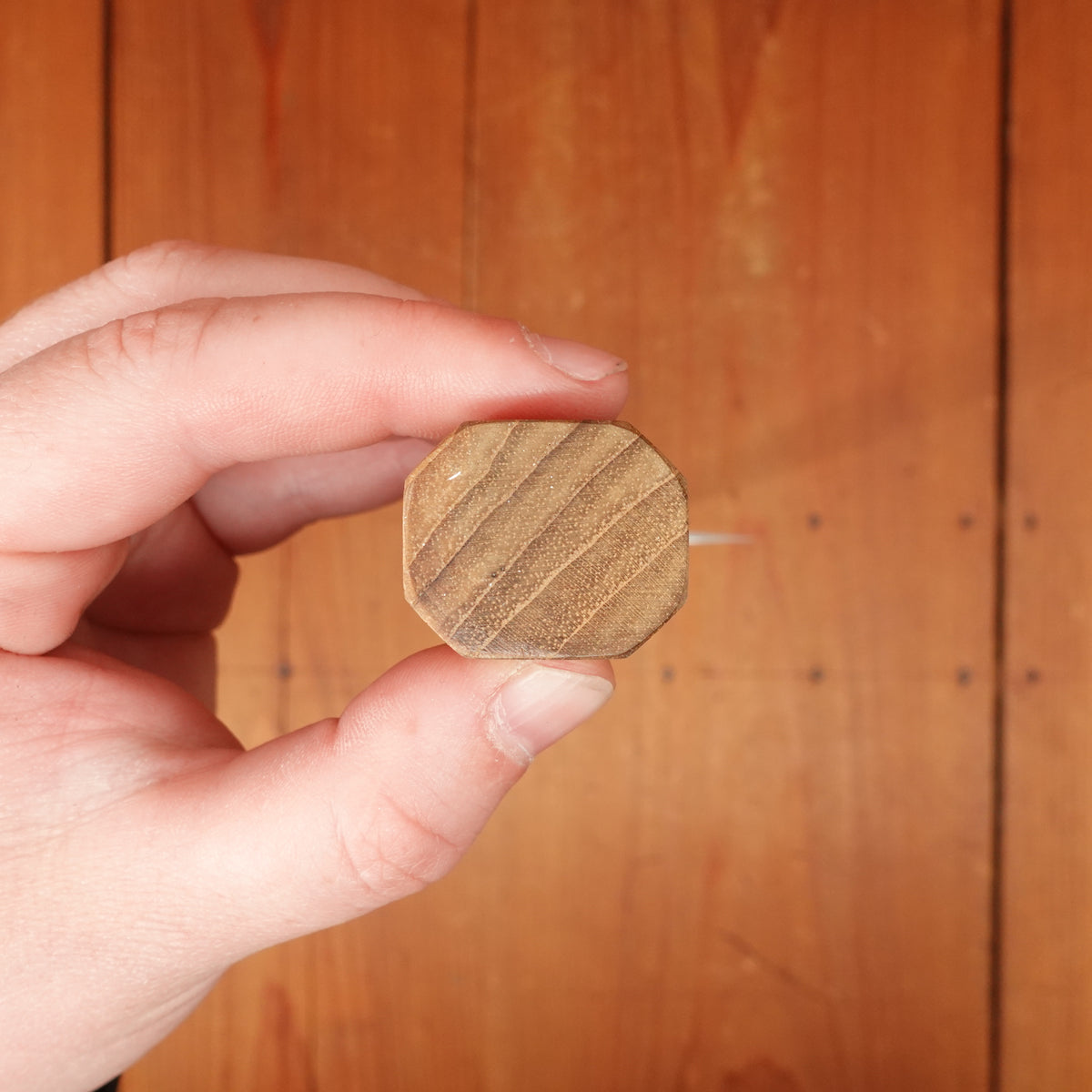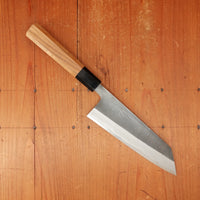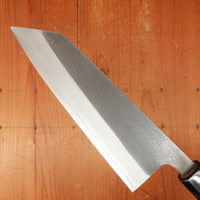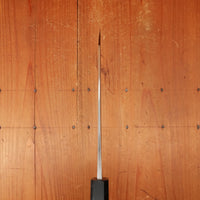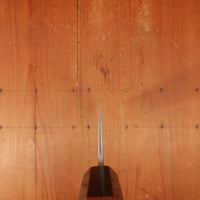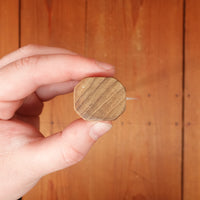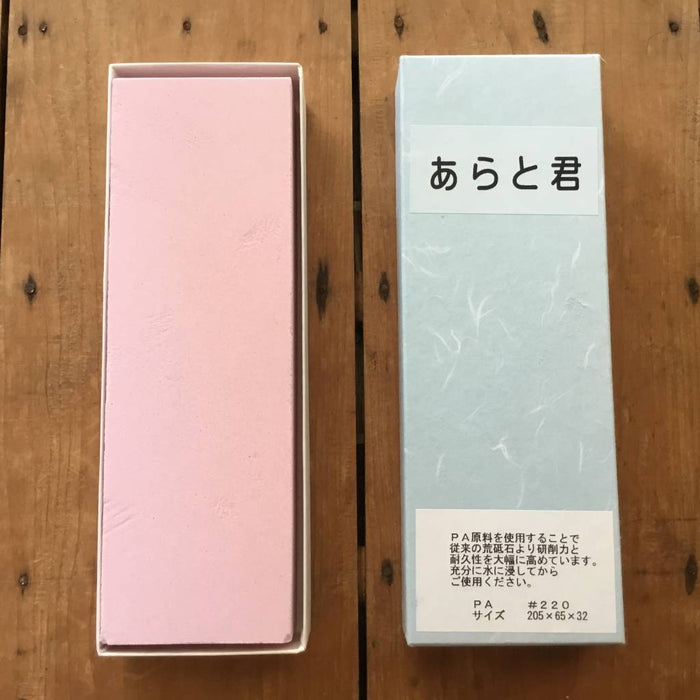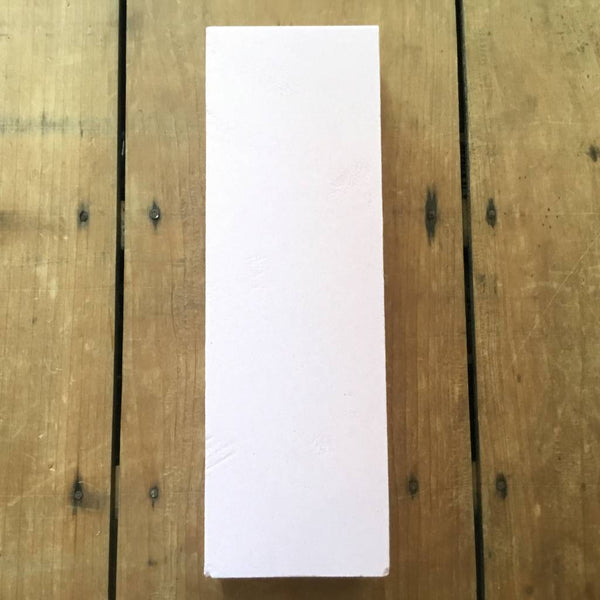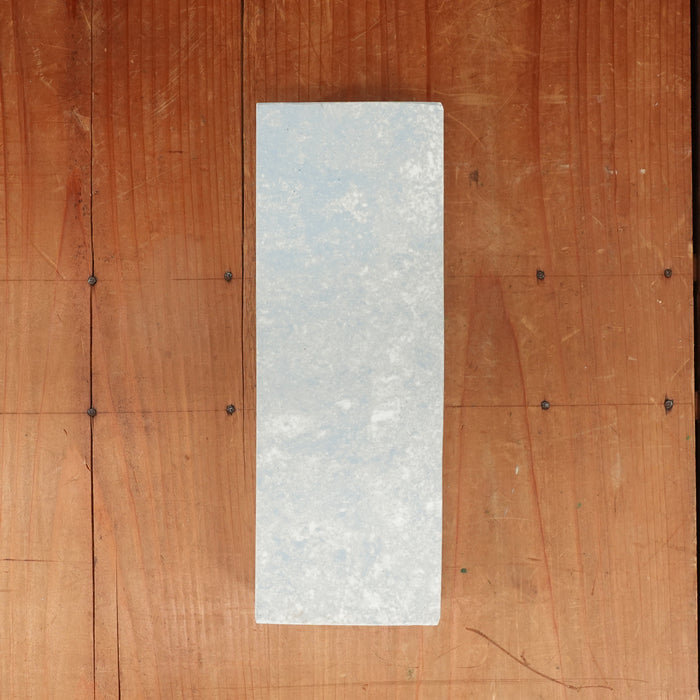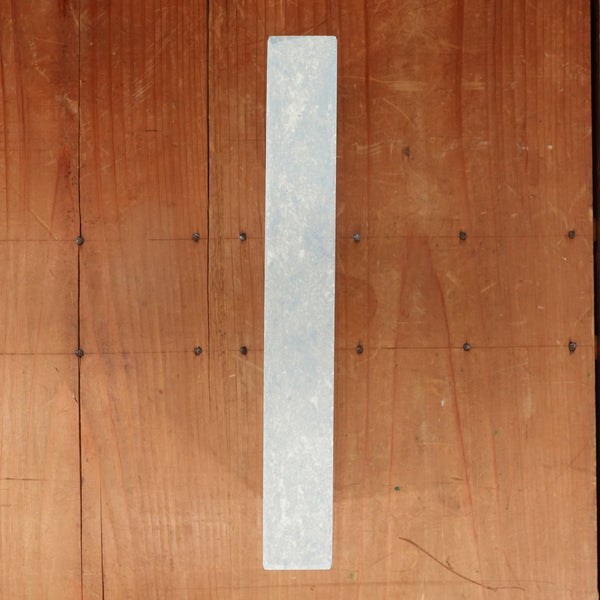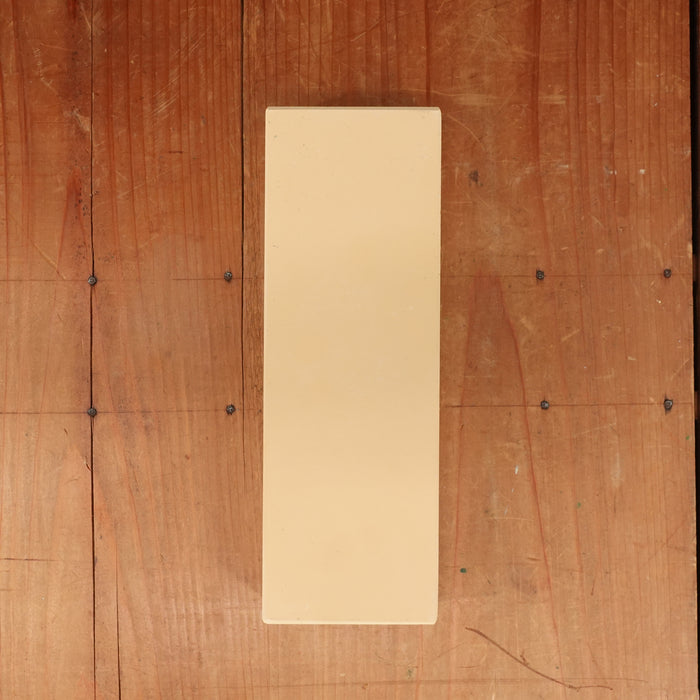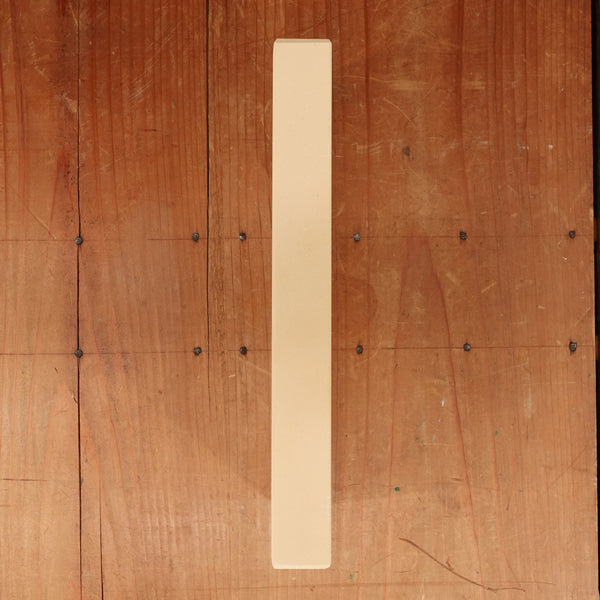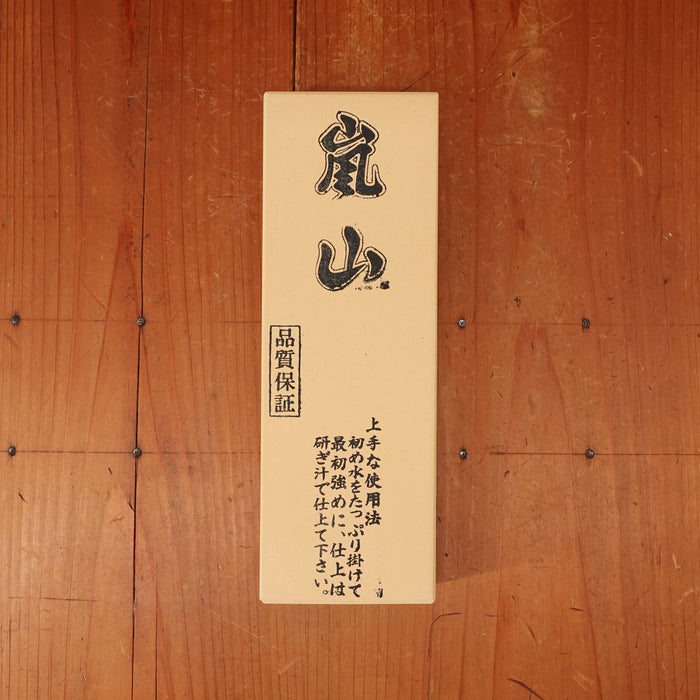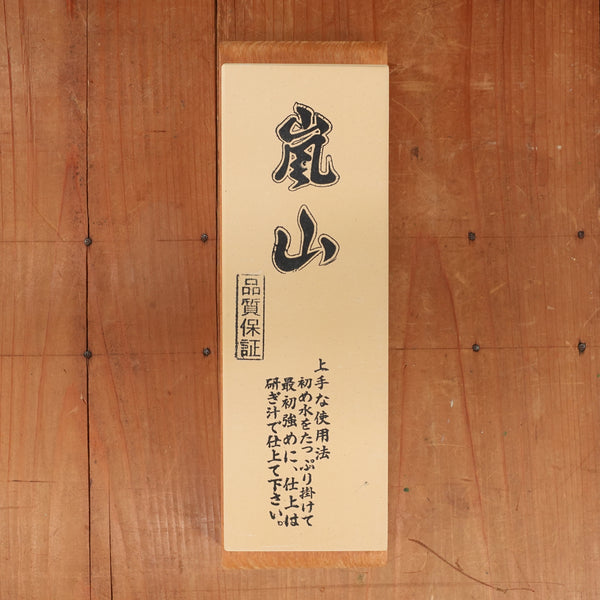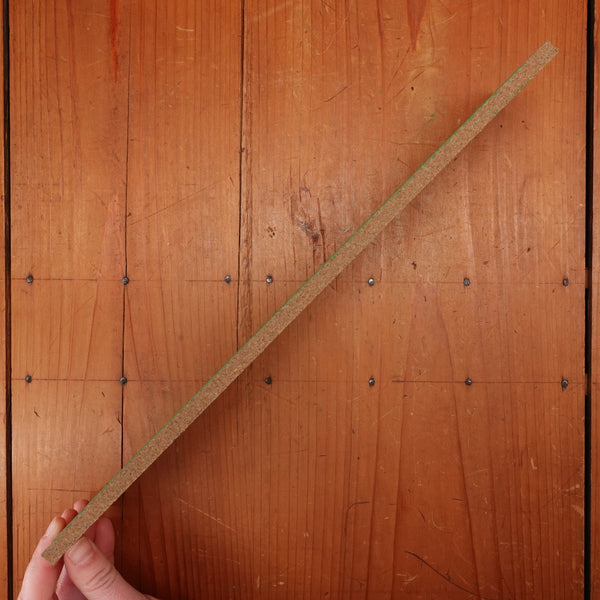Yoshikane Hamono 165mm Bunka Iron Clad Shirogami 2 Kurouchi Nashiji Teak Handle
-
Regular Price
-
€389,77
-
Sale Price
-
€389,77
-
Regular Price
-
Sold Out
-
Unit Price
- per
- Regular Price
- €389,77
- Sale Price
- €389,77
- Regular Price
- Unit Price
- per
Made for Hatsukokoro by Yoshikane in Sanjo Niigata.
Yoshikane's hand forged shirogami 2 carbon steel core with dark kurouchi finished nashiji (pear skin) textured iron cladding and octagonal teak handle with horn ferrule.
Shirogami #2 carbon steel is an excellent low contaminate carbon steel very responsive to sharpening stones, taking an extremely fine but biting edge easily. It is however a reactive carbon steel having only a tiny bit of silica in addition to carbon as it's alloy additives, there is no chromium or other alloy to slow down rusting.
Hardened to 64 HRC, these knives hold a keen edge for a long time, owing to thier excellent heat treatment and despite this hardness they have a good degree of toughness and are very very easy to sharpen. Being ground with a wide, kiriba primary bevel, they also allow for easy thinning down the road, especially as Yoshikane kireba grinds are especially flat.
Being all carbon steel it should be dried immediately after use, the iron cladding and steel core will develop a patina with use, but any orange rust should be removed with a light abrasive.
Yoshikane is headed by Kazuomi Yamamoto the fourth generation to operate this family run forging and grinding operation in Sanjo, Niigata which has been making kitchen knives since 1919. They deserve their good reputation for excellent forging and heat treatments, which make for easy sharpening and great edge life for both single and double bevel knives. This is especially true about the thin grinds provided on their double bevel knives. For middleweight Japanese knives, they cut like a much thinner blade.
About This Knife



Listed Length: 165mm
Total Length: 310mm
Edge Length: 167mm
Heel Height: 50mm
Spine Thickness: 3.3mm
Weight:
Orientation: Ambidextrous
Blade Type: Carbon Steel
Steel Type: Shirogami 2 (White Paper #2)
Steel Hardness (HRC): 64
Maintenance: More Attention
Handle Type: Japanese (wa)
Handle Material: Teak & Horn Ferrule
Dive Deeper
Medium-fine finish
Sharpening Supplies
Stones & Accessories selected specifically for this knife.
Arato-kun #220 Extra Coarse Grit Whetstone
- Regular Price
- €29,78
- Sale Price
- €29,78
- Regular Price
-
- Unit Price
- per
Bernal Cutlery Takarazukushi 1200 Grit Blue Marble Semi-Soft Ceramic Japanese Whetstone
- Regular Price
- €64,82
- Sale Price
- €64,82
- Regular Price
-
- Unit Price
- per
Bernal Cutlery Takarazukushi 4000 Grit Yellow Semi-Hard Resinoid Japanese Whetstone
- Regular Price
- €71,82
- Sale Price
- €71,82
- Regular Price
-
- Unit Price
- per
Arashiyama #6000 Whetstone Stone NO Wooden Base
- Regular Price
- €50,80
- Sale Price
- €50,80
- Regular Price
-
- Unit Price
- per
Arashiyama #6000 Whetstone With Nagura Stone and Wooden Base
- Regular Price
- €54,31
- Sale Price
- €54,31
- Regular Price
-
- Unit Price
- per
Bernal Cutlery Monodiachrome™ Precharged Deburring Strop
- Regular Price
- €35,04
- Sale Price
- €35,04
- Regular Price
-
- Unit Price
- per
Shirogami 2 (White Paper #2)

